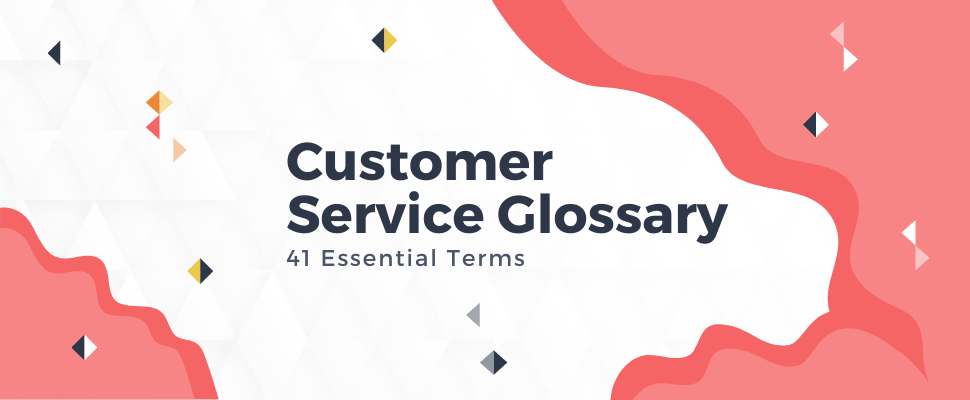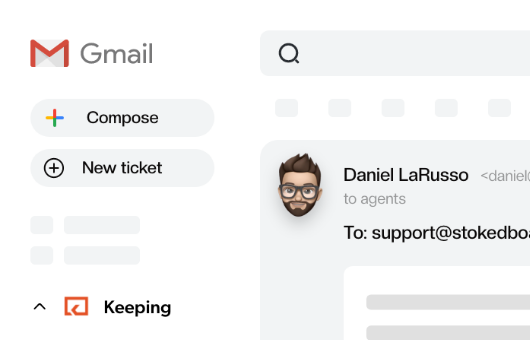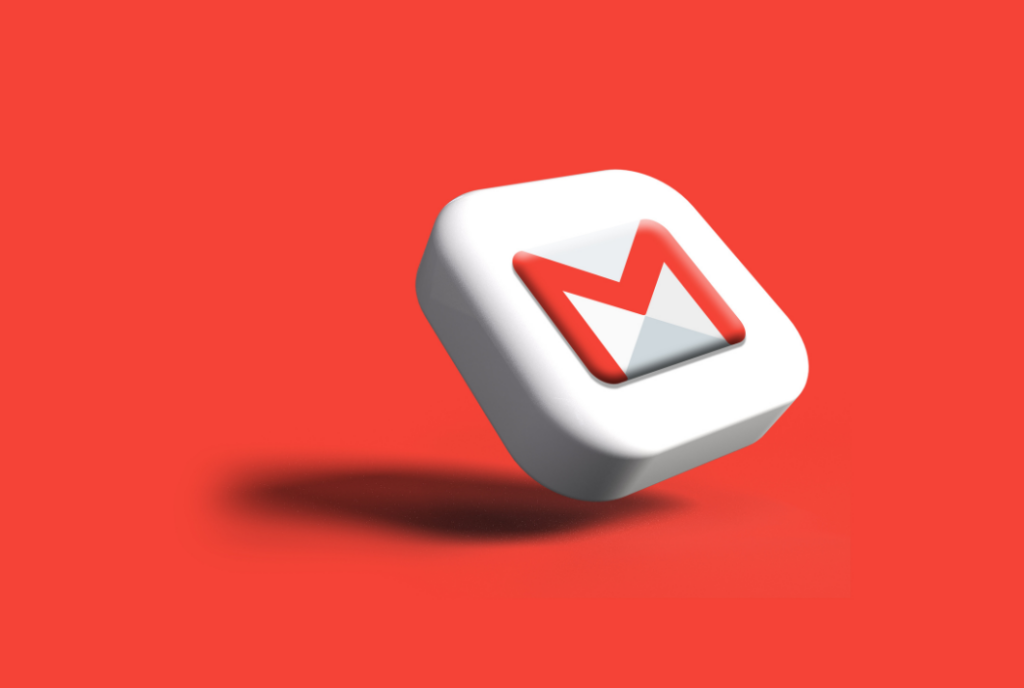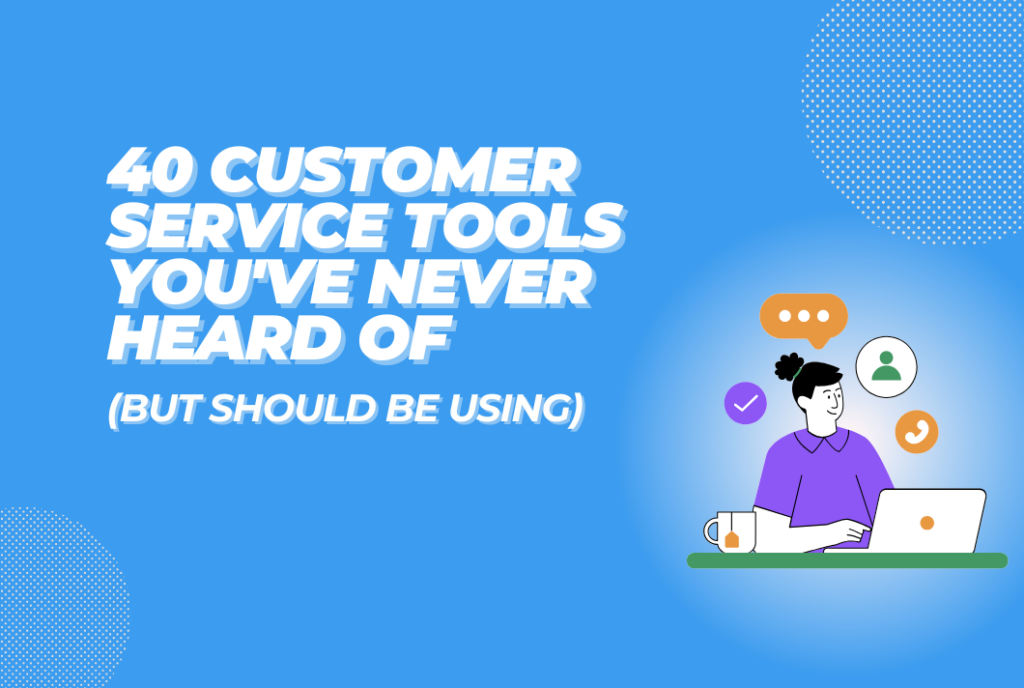
41 Customer Service Terms You Need to Know
If you interact with customers on a daily basis, it's important you know the words, jargon, and terms to better communicate with your team. Here's our list of the most important customer service terms, presented in an easy-to-use glossary.
The terminology your customer support team uses plays a key role in shaping expectations and understanding in communication. A shared language is important in building a culture that thrives and can go the extra mile in helping customers.
The words we use influence the way we perceive the world. When we are in a particular environment, we expect the use of certain types of language. The customer service world is no different. Here’s a quick quiz: do you know how to calculate a customer effort score? What about the self-service ratio? No? Then it’s time to study up on customer service lingo!
Here is an extensive glossary of customer service terms most commonly used in the customer support sphere. Any customer support agent should have a good handle on on these terms and concepts.
What is customer service?
But first, what exactly is customer service?
Customer service is the assistance your business offers customers before, during and after the sale. It plays a crucial role in attracting new customers and retaining existing customers. It’s how your business maintains customer satisfaction and a strong reputation for taking care of its customers.
90% of customers use customer service as a factor when they are deciding whether or not to do business with a company. If you’ve not already emphasized customer service in your business, then now is the time to start.
In case you need some ideas, we’ve already written a post on how to provide excellent customer service.
41 customer service terms you need to know
1. Agents
The agents, or customer service representatives (CSRs), are the people who actually assist customers and deliver your customer service. They directly interact with your customers and are the human face of your business.
Your agents have the responsibility of guiding customers towards a sale and supporting them when they have purchased your product or service. They are your customers’ first port of call when encountering an issue or running into problems.
2. Agent empowerment
Agent empowerment means giving your employees the freedom to act as they see fit with regards to customer issue resolution. Instead of closely following a predefined script, agents have the power to make their own decisions when considering how to help customers.
Agent empowerment requires having the right tools and training for your customer service agents, but ultimately has many benefits for your service team. Agents will be more highly engaged and satisfied in their work, delivering a better standard of customer service as a result.
3. Agent life cycle
Agent life cycle refers to the agent’s entire duration of association with your company, from sourcing and hiring through to the end of their employment. It includes such things as performance reviews and career development, and strongly impacts the value a company can gain from employing individual agents.
It’s very important for businesses to successfully onboard and train their agents, offering them opportunities for professional development and meaningful work. Companies need to invest in the agent life cycle in order to hire and retain top talent.
4. Backlog
Your backlog refers to the number of tickets that are unresolved in your customer support queue. It’s important to try to keep this number as low as possible or it could lead to dissatisfied and unhappy customers.
These are the tickets that haven’t been resolved during your company’s usual response time. It’s important to track your backlog as it could alert you to the fact that you have a higher ticket volume than normal, or that you don’t have enough team members.
5. Benchmarking
Benchmarking is the process of measuring your company’s (or an individual’s) performance against an aspirational standard. This standard could be set by your competitors or the industry as a whole. It can be used to track an individual agent’s current or past performance and to understand growth over time.
6. Business hours
Your business hours are the time of day your company is available to answer customer support requests. A customer expectation is for a business to be open 24/7, but you’ll need to choose your business hours depending on demand and the availability of support channels.
7. Canned response
A canned response is a reusable response that service agents can use to answer common customer queries. It will usually be available through your help desk software – Keeping offers the ability to set up and share canned responses in Gmail to better allow you to help your customers.
8. Chatbot
A chatbot is a computer program that simulates human conversation and allows you to provide automated service to your customers. It’s driven by artificial intelligence to answer common customer questions.
It reduces the number of incoming support tickets you receive and is part of your customer self-service strategy. It can also route the customer to the appropriate human agent if necessary.
9. Contact center
A contact center is the central point from which a business offers omnichannel customer support. Support can be delivered over phone, email, live chat and social media. Contact centers are growing in importance as companies increasingly expect businesses to be available through every channel.
10. Customer-centric
Being customer-centric is when businesses keep the needs and expectations of the customer at the heart of everything they do. Customer-centricity is not just limited to the service team, but must permeate the business as a whole.
11. Customer Effort Score (CES)
Customer Effort Score is a metric that measures the amount of effort it takes for customers to complete an interaction with your business. It’s calculated using a survey sent out to your customers after a particular experience with your support team.
A low CES is likely to lead to more satisfied and loyal customers. Rather than trying to create customer delight, the focus is on making it easier for them to complete essential tasks.
12. Customer Experience (CX)
Customer Experience (and customer experience management) is the holistic perception customers have of their every interaction with your brand. It encompasses every touchpoint a customer has including reading a blog post about your company, to opening and using their new product, to a conversation with your support team.
Customer service plays a key part in creating a great CX and strongly influences how customers feel about your brand. Companies usually strive to improve their CX in order to keep customers buying more products and leaving positive reviews.
13. Customer Lifetime Value (CLTV)
Customer Lifetime Value is an important customer service metric that helps businesses to measure the total revenue a customer brings throughout his or her entire relationship with the company. CLTV can be positively impacted by cross-selling and upselling on the part of the customer service team, encouraging customers to buy more products that benefit them.
14. Customer loyalty
Customer loyalty is the sense of commitment a customer has towards your company over time, and includes them choosing to continue to buy your products and services even if a competitor offers a cheaper alternative. Customer loyalty is one of the key goals of businesses and great customer service is an important way to earn loyalty. Most companies measure customer loyalty via a Net Promoter Score (NPS).
15. Customer relationship management (CRM)
Customer relationship management is the approach businesses take towards building and enhancing relationships with customers throughout the customer lifecycle. It’s a combination of strategies and technologies that allow you to analyze customer interactions and drive customer retention and growth.
16. Customer retention
Customer retention is the number of customers that your business is able to retain over time. A better retention rate, the more revenue your business can earn through the same number of customers.
17. Customer Satisfaction Score (CSAT)
Customer Satisfaction Score is a popular survey that businesses use to capture just how satisfied a customer feels after a particular interaction with their company. It provides an indication of how the business is performing and is a strong predictor of happy customers.
18. Customer service philosophy
A customer service philosophy is a shared set of goals for your support team and includes the vision and values of the company as relates to customer service. It gives your service team a target to aim for when delivering customer service, and clearly states what customer service means to you as a business.
19. Escalation management
Escalation management refers to when a support ticket cannot be dealt with by a particular customer service agent, and it is escalated to someone who can provide the appropriate support (usually management).
20. Empathy
Empathy is the ability to place yourself in another person’s shoes and imagine what they might be thinking and feeling. Empathy is perhaps the most important skill that customer service agents need to cultivate, especially when dealing with rude and angry customers.
21. Feedback
Feedback is the thoughts and opinions of customers with regards to your company, including areas that could be improved. Feedback might be solicited through surveys or it might be unsolicited reviews or social media comments.
22. First contact resolution rate
Contact resolution rate is the percentage of customers who have had their issue resolved during the first time he or she makes contact with your support team members. The higher the first contact resolution rate, the happier your customers will be.
23. First response time
First response time is the amount of time that passes between when a customer opens a support ticket and when the support agent first responds to their query. This time may be measured in seconds, minutes, hours or days, and there are different expected response times across the various customer service channels.
24. Help desk
Help desks are software platforms that support agents use to manage their incoming support emails. They make it easy for agents to prioritize and route different customer queries and reduce the risk of collision when dealing with tickets. Keeping is customer support help desk software for Gmail.
25. Key Performance Indicator (KPI)
A Key Performance Indicator is a customer service metric tied to a specific goal that companies are striving towards. KPIs help you assess the performance of your customer support team and identify any areas that could be improved.
26. Knowledge base
A knowledge base is a self-service repository of information that customers and agents can use to find answers to common queries and solutions to typical problems. It’s an important way of cutting down customer requests to the service team and a way of providing customers with instant, 24/7 support.
An external knowledge base can be accessed via a self service portal and is an important pillar of customer service automation.
27. Live chat
Live chat is an instant messaging tool that enables your business to provide fast, easy support to customers through your company website. Agents can typically handle several conversations at once, making this a cost-effective support tool for businesses.
28. Net Promoter Score (NPS)
Net Promoter Score is a survey that measures how likely a customer is to recommend your brand to family or friends. Net Promoter Score is calculated on a scale between 1 and 10, with 0-6 being a detractor, 7-8 being passive, and 9-10 being a promoter. NPS is an important predictor of loyalty to a brand and is a good general measure of customer satisfaction.
To calculate your overall NPS score, count up the number of Detractors, Promoters, and Passives, then subtract the percentage of Detractors from the percentage of Promoters.
For example, if you had 20 Detractors, 30 Promoters, and 10 Passives, you have 60 total responses. So you have 50% Promoters, 33% Detractors, and 50-33 = 17. In this example, you have a NPS score of 17. Too complicated? Then use this NPS calculator!
29. Omnichannel
Omnichannel means an approach to delivering customer support that spans across channels, providing a consistent experience whichever channel is chosen. Types of customer service can include live chat, email, social media, phone and in-person.
If your support agents receive requests from Facebook, Instagram, and Twitter, then make sure you choose a customer support tool that has omnichannel support.
30. Outsourcing
Outsourcing is the strategy of businesses to hire remote workers to handle some of their operations. It’s common for businesses to employ customer service teams in different time zones to help them provide customer support outside of their normal business hours. Sometimes businesses outsource customer service to cut costs.
Having support team members in other timezones can also be a way to provide customer service around the clock. While you are sleeping they are working!
31. Personalization
Personalization is when a business’s communications are tailored towards the needs of an individual customer. It might be something as simple as using a customer’s name in a support interaction, or sending them personalized email campaigns that recommend products and services.
Customers increasingly demand personalization in their interactions with businesses, and they will turn to your competitors in order to get it.
32. Proactive customer service
Proactive customer service is when businesses actively strive to anticipate customer problems and solve them before a customer even has a chance to notice something has gone wrong.
Proactive customer service is the practice of paying attention to the whole customer experience and trying to deliver exceptional support when customers least expect it. It creates memorable moments with customers that turn them into loyal fans.
33. Reactive customer service
Reactive customer service is when businesses passively wait for customers to contact them with an issue or problem. This is the more traditional mode of customer support compared to proactive service. Agents need to be available at all times to handle these incoming customer queries.
34. Resolution rate
The resolution rate measures the proportion of tickets a customer service team is able to resolve versus the total number of tickets received. A higher resolution rate indicates the success of your service team and shows their understanding of your product or service.
35. Self-service
Self-service is a type of customer service that enables customers to solve problems on their own without the intervention of someone from your support team. Self-service technologies include a knowledge base, customer forums, FAQs, and chatbots.
Many customers today now expect self-service and they won’t appreciate being forced to deal with your support team. It’s always good to offer customers the option to solve problems on their own, and only offer live support for the more complex cases.
36. Self-service ratio
The self-service ratio is the percentage of customers who solve their problems with the self-service help available rather than going on to speak to a support agent. It’s an indication of the success of your self-service strategy.
37. Service Level Agreement (SLA)
Service Level Agreement is a contract between the company and the customer defining the service the latter will receive. It usually involves uptime of the service or response time of the customer service team.
38. Subject Matter Experts
Subject Matter Experts are members of your support team with specialized knowledge of your company’s products and services. Certain tickets will require being routed to these subject specialists, as they can’t be solved by more generalist individuals on the team.
39. Support ticket
A support ticket is a term that originates with customer support software that refers to a particular interaction between your customer and an agent. It’s a record of the customer’s problem, the solution to the problem, the person responsible for providing that solution and when the ticket was closed.
Some companies prefer to call their support tickets “conversations” to make them sound more human. When a ticket comes in, it’s defined as “open”, and when a resolution is reached the ticket is “closed”.
40. Ticket routing
Ticket routing is the process of deciding which tickets will be assigned to which of your customer support agents. The higher the volume of tickets a company receives, the more important it becomes to have effective ticket routing.
This will have an impact on first response times and therefore the happiness of your customers. Each agent assigned a ticket should have the appropriate skills and expertise to handle the problem.
41. Ticket volume
Ticket volume refers to the total number of tickets your customer support team receives on a daily basis. It’s essential to track ticket volume in order to manage resources and scale your department effectively. Ticket volumes can be reduced by providing self-service customer support options like a well-stocked knowledge base or a friendly chatbot.
Final remarks
If you work in customer service, it’s vitally important to know the lingo so you can communicate properly. Many terms have very specific meanings so they’re worth learning and remembering.
Understanding customer service terminology will drastically improve your customer support efforts and ensure your customers are receiving the best possible service.
Join 150+ teams that are sharing inboxes with us
The easiest way to upgrade your shared Gmail account. There’s no credit card is required.






